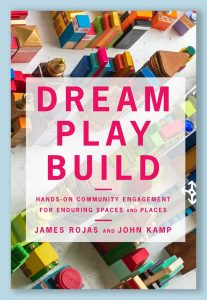
Before the COVID-19 pandemic upended life around the world, we were living in the most prosperous period in all of human history, and yet people weren’t happier or more fulfilled. Why? A rising collection of data confirm and illuminate the disconnect between prosperity and purpose.
An incredibly high number of people express dissatisfaction with their jobs. A recent study sought to more accurately define the term “good job” and determine how many Americans had them. The survey found the top three components of a “good job” were enjoyable day-to-day work, stable and predictable pay, and a sense of purpose—but also found only 40% of employees felt they had these things.
Mental Health America recently released a survey on workplace satisfaction that found 81% of respondents felt their work stress created family problems, 63% said work stress caused them to engage in unhealthy behaviors, 71% spent time speaking badly about their company or boss, and 71% spent time each week thinking about or looking for a new job.
And a recent Gallup survey found that while the number of employees who feel “engaged” at work is the highest it’s been in years, that number is still only 34% in the United States and 15% internationally. A prior survey found that only 27% of these employees believe in their company’s values.
Outside of work, the picture grows grimmer—many people are stressed out and unhappy. The World Happiness Report, for example, analyzes three primary measures of happiness, and all three are at or near record lows. The 2019 U.S. General Social Survey reported unhappiness levels higher than at any point since the 2007 financial crisis—and, before that, since the 1970s. And the 2019 Gallup Global Emotions Report found stress, worry, and anger among people around the world at multi-year highs.
These increases in anger and stress are being accompanied by a surge in loneliness. Harvard professor Robert Putnam first brought widespread attention to social isolation and loneliness—and the concept social capital—in the United States in his seminal book, Bowling Alone. And more recent surveys of social connection and loneliness are not indicative of progress since that time.
A 2016 survey conducted with Harris Poll and the American Osteopathic Association, for example, found that 72% of Americans experience loneliness, almost a third on a weekly basis. And a 2018 study by Cigna documented similar results. By their measures, nearly half of Americans feel lonely and 54% say that no one knows them well. Results are particularly acute among younger Americans.
And outside the United States similar results have been documented in Canada, for example, with the United Kingdom going so far as to appoint a “minister for loneliness.”
Numerous countries, seeing these statistics, are taking the problem of loneliness seriously as a public health crisis. It remains to be seen whether the COVID-19 pandemic and other recent crises change this fundamental dynamic. The disease and associated social and economic fallout have wrought unparalleled devastation—tens of millions ill, millions dead, hundreds of millions who have suffered intense economic hardship, and untold psychological trauma for billions around the world.
Indeed, the sheer scale of the pandemic and its impacts could make things dramatically worse. They could also, counterintuitively, reconnect us to things that matter—a small silver lining in the midst of devastation.
Excerpted from HBR Guide to Crafting Your Purpose by John Coleman. Reprinted by permission of Harvard Business Review Press. Copyright 2022 Harvard Business Publishing Corporation. All rights reserved.
John Coleman is an author and a senior executive in the financial industry. John is frequent contributor to Harvard Business Review, where he focuses on personal development and leadership issues.
Fast Company , Read Full Story
(26)






